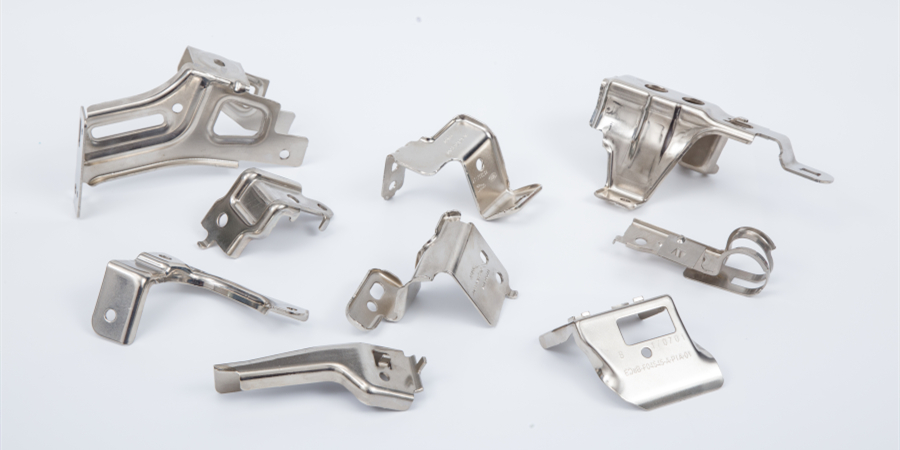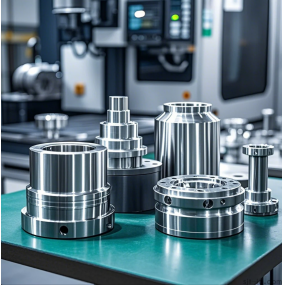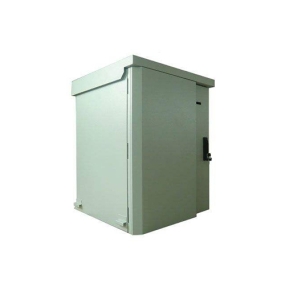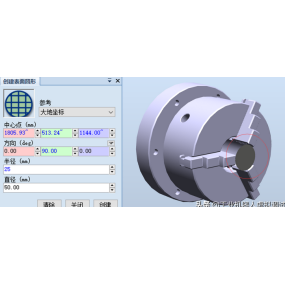Many structural parts in electronic equipment are made of metal sheet, which can not only reduce the quality of electronic equipment, but also reduce the cost of processing. Bending parts are the most common stamping parts in plate structure design and processing. Bending parts with outstanding craftsmanship can not only achieve outstanding processing quality, but also simplify tooling molds and reduce production costs.
After the sheet metal is bent, the rigidity is greatly improved, and the bending moment of inertia of the section is greatly increased. However, the cross-sectional form and structural scale of the bent parts are often limited by the size and structure of the upper and lower dies of the sheet metal bending machine. Through repeated process experiments on 90-angle bending, U-shaped bending, and Z-shaped bending parts, and after cleaning up and analyzing the experimental data, it is found that the law of bending is related to the mechanical properties of the material, the minimum bending radius, the straight edge height of the bending part, the width of the opening of the bending lower die, the craftsmanship of the bending shape, and the yield strength of the material.
The quality requirements for the processing of bending parts are: to meet the shape and scale requirements of the part experience, the surface of the tortuous parts should be bright and free of obvious scratches. In addition, the tortuous parts should be free of cracks, torsion and warping and other defects.  Stamping parts after tortuous should adhere to a certain tortuous angle to avoid the influence of springback. The shape and position of the tortuous parts should conform to the requirements of the drawing.
Stamping parts after tortuous should adhere to a certain tortuous angle to avoid the influence of springback. The shape and position of the tortuous parts should conform to the requirements of the drawing.
The surface quality requirements and testing methods of bent parts are basically the same as those of punched parts, and visual inspection is generally used for inspection. The main inspection contents are: no cracks are allowed in the inner and outer tortuous corners of tortuous parts; no indentations or severe scratches are allowed on the outer surface; there should be no severe material thickness thinning in the tortuous deformation area; qualified bending parts should not have unrequired torsion and warping deformation.
The accuracy of the bending part is related to many factors, such as the mechanical properties and material thickness of the bending part material, the accuracy of the mold structure and anger, the number of steps and the order of steps, and the shape and scale of the bending part itself. Therefore, the scale accuracy is often not high. Generally, the scale economy of the bending part is preferably below the IT13 level, and the addition of shaping and other processes can reach the IT11 level. Precision requires that the material thickness of the bending part must be strictly controlled.
For testing tools for the accuracy of zigzag stamping parts, measuring tools such as vernier calipers, height rulers, and all-round angle rulers are generally used; for stamping and bending parts with messy shapes or large scales, special checking tools such as inspection samples and sample racks can be used for testing.
This article is from EMAR Mold Co., Ltd. For more EMAR related information, please click: www.sjt-ic.com,


 English
English Spanish
Spanish Arabic
Arabic French
French Portuguese
Portuguese Belarusian
Belarusian Japanese
Japanese Russian
Russian Malay
Malay Icelandic
Icelandic Bulgarian
Bulgarian Azerbaijani
Azerbaijani Estonian
Estonian Irish
Irish Polish
Polish Persian
Persian Boolean
Boolean Danish
Danish German
German Filipino
Filipino Finnish
Finnish Dutch
Dutch Galician
Galician Catalan
Catalan Czech
Czech Croatian
Croatian Latin
Latin Latvian
Latvian Romanian
Romanian Maltese
Maltese Macedonian
Macedonian Norwegian
Norwegian Swedish
Swedish Serbian
Serbian Slovak
Slovak Slovenian
Slovenian Swahili
Swahili Thai
Thai Turkish
Turkish Welsh
Welsh Urdu
Urdu Ukrainian
Ukrainian Greek
Greek Hungarian
Hungarian Italian
Italian Yiddish
Yiddish Indonesian
Indonesian Vietnamese
Vietnamese Haitian Creole
Haitian Creole Spanish Basque
Spanish Basque











